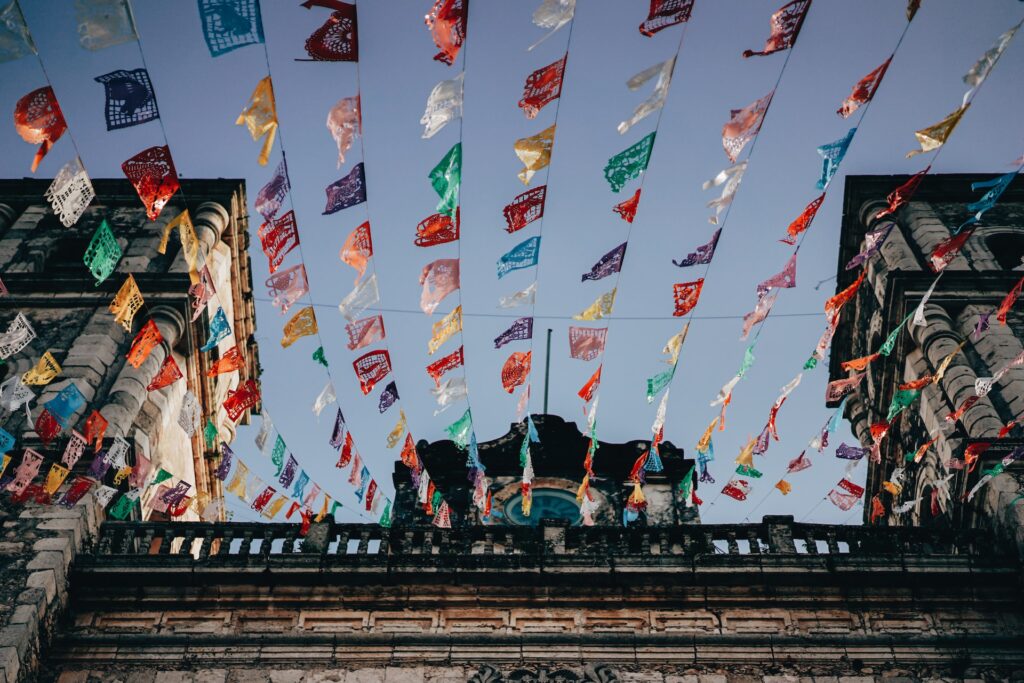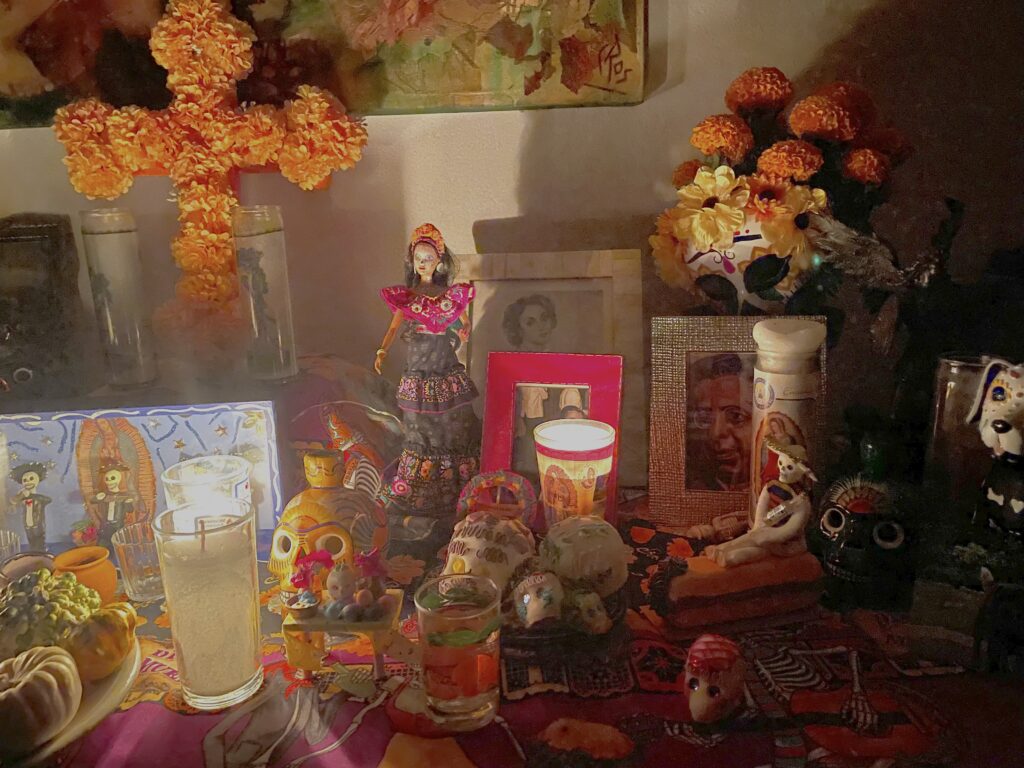“The Mexican …is familiar with death, jokes about it, caresses it, sleeps with it, celebrates it. True, there is as much fear in his attitude as in that of others, but at least death is not hidden away: he looks at it face to face, with impatience, disdain or irony.”
Octavio Paz, Labyrinth of Solitude
Death is quite pervasive in the Mexican society; we sadly see it in its crime rates and poor public health (1). Yet, we can see that Mexicans have a unique relationship with death. If coming from abroad, you may observe Mexicans’ close cultural closeness to death and think that they are not scared of dying. But on the contrary, underneath the jokes, there is a very strong respect for the departed and they can be uncomfortable “playing with death” for fear there will be reprisal. Mexicans are often extremely fearful of death.
Day of the Dead
So as part of their coping system, they keep a good-humored familiarity with it. Representations and rituals of death play a prominent role in popular culture, art, and religion. Such rituals are most vigorously expressed in the Days of the Dead (Día de los Muertos), November 1st and 2nd. On this occasion, it is thought that the deceased can visit family and friends, Mexicans arrange altars for them in their homes with their favorite food, beverages, and other objects that the departed favored in their living years. Also placed on the altars are skulls made of sugar or chocolate, and Cempasúchil flowers, all this to welcome them on their brief return to earth. Many also visit churchyards and adorn graves.

To explain this unique and respected relationship with death, from an Intercultural and Organizational point of view, we can refer to Hofstede’s(2) studies reveal that Mexicans scored high in Uncertainty-Avoidance, one Mexico’s highest (82) scores in the Hofstede Dimensions, indicating the extent to which a culture feels threatened by uncertain or ambiguous situations. What can be more uncertain than Death itself. In other words, the way a group or culture tolerates, copes with or battles the unpredictable, it’s overall reaction to ambiguity.
Uncertainty and Avoidance in the Mexican Organizations
Associates from such high Uncertainty-Avoidance cultures tend to get anxious about unknown situations. They do not readily accept change and are very risk adverse; this translates into practices to minimize these levels of uncertainty, such as: a tendency to reduce the occurrence of the unknown and plan step-by-step changes to mitigate uncertainty, employees preferring to hire known people over unknown, and the implementation of strict rules, laws, policies, and regulations to control everything.
Uncertainty: High or Low
Other countries with high Uncertainty Avoidance index (UAI), besides Mexico are Germany, Finland, Russia, Italy, Korea, Greece, Portugal, and Guatemala. On the other side of this scale or index we find the lowest uncertainty avoidance countries such as, the U.S., Jamaica, Denmark, and Singapore.

As the example of the Cultural dimension touched briefly today, understanding the client, employee, or leader from a high uncertainty avoidance culture from a lower uncertainty avoidance culture’s point of view, one should look for ways to lower in their eyes this uncertainty: actions such as more formal documentation and procedures for projects and more structured presentations. And in a opposite side of the scale, the leader from a higher uncertainty avoidance culture working with a lower uncertainty avoidance culture, should perhaps try to go straight to the facts, not require a lot of rules, allow freedom of expression, as well as new ideas and opinions.
Awareness is key. Let me help.
Having said all this, if you want to understand a very different culture and have the best working relationship, you must open your eyes, and get first-hand know-how. Although you can establish each culture somewhere on the dimensions’ scale, if you’re working or leading a culture, you’re not familiar with, learn about each of the Cultural Dimensions but then engage in good observation and good listening with the people from the new culture in front of you. Help bridge the communications gap, keep your attitude flexible, and be patient —the unexpected and the rich differences between cultures is where the most valuable ideas and progress awaits. Talk to others and be curious.
Sources / Further reading
- Kitroef, N. & Villegas, P. (2020) Mexico’s coronavirus struggle worsened by fear of hospitals. Extracted from https://www.nytimes.com/2020/08/10/world/americas/mexico-coronavirus-hospitals.html
- Hofstede, G., Hofstede, G.J., & Minkov, M. Cultures and Organizations: Software of the Mind. Revised and expanded 3rd Edition. New York: McGraw-Hill USA, 2010. ISBN 978-0-07-166418-9.




Pingback: Mexico’s Day of the Dead: its Cultural Depths - MG Coaches
Pingback: Why you need to Master Interculturality and Uncertainty Avoidance - MG Coaches
Pingback: Understanding Finance Culture: Precision and Power Dynamics
Pingback: Unlock A Successful Flow with Operations and Logistics Culture